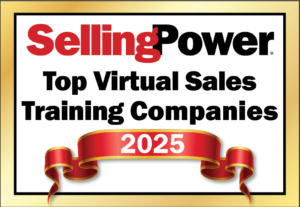How to Present Software Solutions to Top Management
In last month’s newsletter we explained how to gain access to top decision makers. Getting access, however, only gets you in the door. Because most software sales reps have a technical background rather than a management background, they typically have little or no idea what to do or say in the presence of a top executive. While many sales training programs teach consultative selling, most of that effort is focused on questioning techniques and needs analysis for lower-level employees, such as professional purchasers and product evaluators. Selling to top executives requires an entirely different approach.
Professional purchasers are concerned primarily with comparing features, functions and price. Top executives, on the other hand, often couldn’t care less about these things. They’re interested in broad business issues such as corporate strategy, revenue and profitability. This means that if your management wants you to sell high, then your firm must have a business-focused value proposition that justifies executive attention. In other words, if all you have to sell is commodity software that’s available from multiple sources, calling high is a waste of everybody’s time.
Because top executives are concerned with business rather than technical issues your sales approach must be different than the approach you might take with a mid-level manager or technical consultant. Although the specifics of the presentation will vary, a presentation to a top decision-maker should be structured into three segments:
- A research-based summary of the business, strategy, challenges and opportunities of the decision maker’s firm. This summary should be couched in the language that’s used inside the customer’s firm and feature the customer’s logo.
- A brief summary of your company, your software and services.
- A business case for how your two firms can work together using your software and services to solve that decision maker’s problems or achieve the decision maker’s goals.
During the first segment assume an attitude of humility rather than being strong and assertive, which might be your natural tendency. Use wiggle words such as perhaps and approximately so it is clear you did research but are well aware that the decision maker knows far more about his or her company than you do.
When you’re done presenting the first segment, check in with the decision maker to see whether you’ve successfully approximated his or her strategy, business concerns and so forth. This is important because the rest of the presentation builds on the effectiveness of the first segment. In most cases the decision maker will be surprised and pleased that you’ve taken the time to understand the real issues.
The decision maker also might be astounded that you know so much about his or her firm. Because you’ve made this section of the presentation with humility and left yourself wiggle room, any corrections or objections from the decision maker need merely be noted and appreciated. Unless you’ve been sloppy with your research, the new information probably won’t substantially change the foundation for the rest of the presentation.
During the second and third segment of the presentation you can drop the humble stance and aggressively express your confidence in your company and the business case you are presenting.
Within those guidelines, the final structure will vary according to circumstances. For example, if you already do business with the decision maker’s firm, you might want to sandwich between the second and third segment a summary of how your two firms have worked together in the past. Similarly, if the purpose of the meeting is to close business you might put a specific closing slide section at the end of the presentation.
This above is based on a conversation with Mark Shonka and Dan Kosch, co-authors of Beyond Selling Value – A Proven Process to Avoid the Vendor Trap (Dearborn Trade, 2002).
Get our Enewsletter
Get the latest sales leadership insight, strategies, and best practices delivered weekly to your inbox.
Sign up NOW →